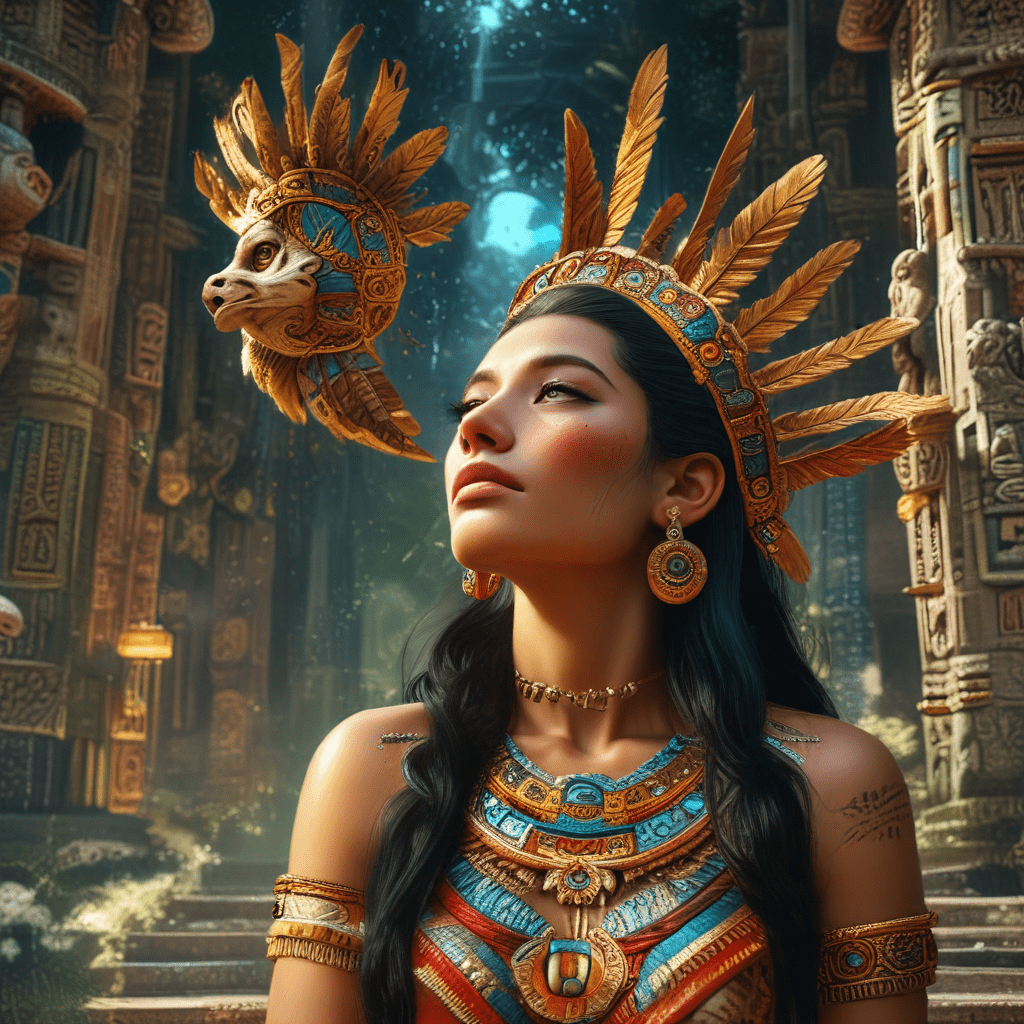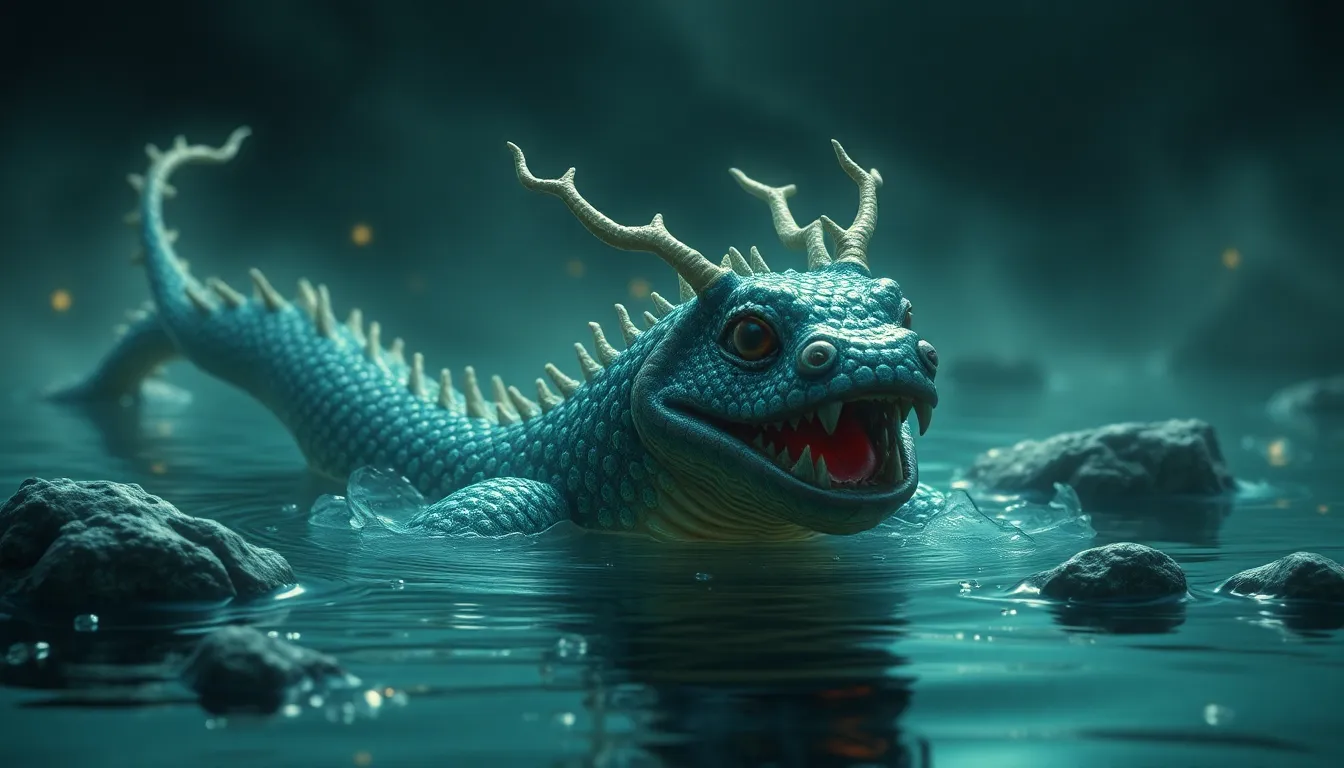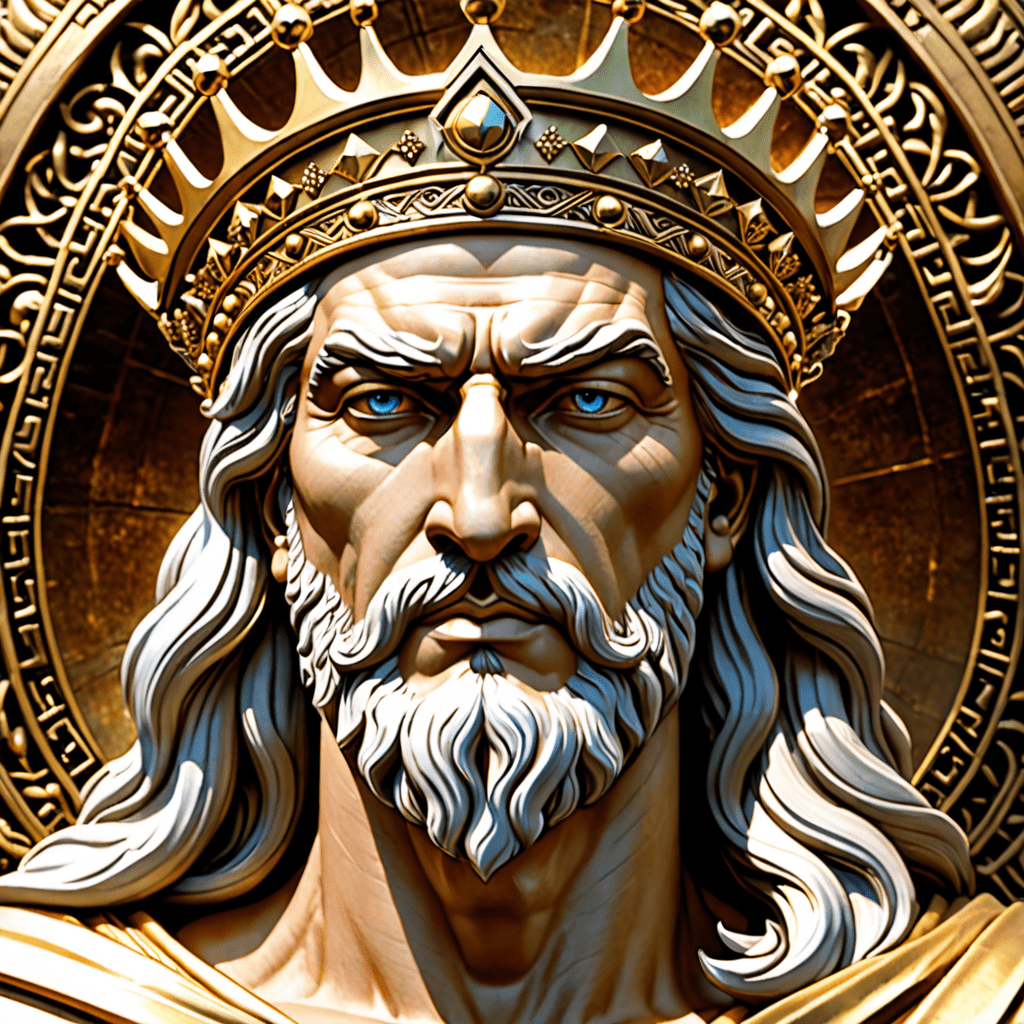Introduction
A. The Mayan Civilization and Its Belief System
The ancient Mayans, who flourished in Central America from around 2000 BCE to 900 CE, possessed a rich and complex belief system that intricately intertwined with their daily lives. This belief system placed great emphasis on the spiritual realm, including the interpretation of dreams as a means of accessing hidden knowledge and guidance.
At the heart of the Mayan worldview lay a profound connection with the natural world and the cyclical nature of time. They believed in a pantheon of deities who embodied various aspects of the cosmos, and each individual was seen as an integral part of this larger cosmic order. Within this framework, dreams were not merely random occurrences but rather portals to a deeper reality, offering insights into the past, present, and future.
B. The Significance of Dreams in Mayan Culture
Dreams held immense significance in Mayan culture, serving as a primary means of communication with the spirit world. It was believed that during sleep, the soul would embark on a journey to the underworld, where it could encounter ancestors, deities, and other supernatural beings. These encounters held the potential to reveal valuable information about personal destiny, impending dangers, or even solutions to problems.
The interpretation of dreams was therefore a highly specialized art, entrusted to individuals known as shamans or dream interpreters. These individuals possessed a deep understanding of both the physical and spiritual realms, allowing them to decipher the symbolic language of dreams and provide guidance to those seeking answers.
II. The Mayan Dream World
A. The Nine Underworld Levels
The Mayans envisioned the underworld as a complex realm consisting of nine levels, each representing different aspects of the human psyche and the journey of the soul. These levels were believed to be interconnected, with the deepest level symbolizing the realm of the ancestors and the source of ultimate wisdom.
As the soul descended through the various levels, it encountered various challenges and obstacles, reflecting the trials and tribulations of life. By successfully navigating these challenges, the soul could gain valuable insights into its own nature and purpose.
B. Symbols and Archetypes in Mayan Dreams
Mayan dreams were rich in symbolism, with each element carrying a specific meaning. Common symbols included animals, plants, natural phenomena, and deities. These symbols could represent various aspects of the dreamer's life, such as their fears, desires, relationships, or spiritual development.
The interpretation of these symbols required a deep understanding of Mayan mythology, archetypes, and cosmology. By recognizing the symbolic language of dreams, shamans could unlock hidden messages and provide guidance to the dreamer.
C. The Role of Shamans and Dream Interpreters
Shamans, or dream interpreters, played a crucial role in Mayan society. They were highly respected individuals who possessed the knowledge and skills necessary to navigate the complex realm of dreams. Through rituals, ceremonies, and their own spiritual insights, shamans could interpret the messages of dreams and provide guidance to those seeking answers.
Shamans were often called upon to assist individuals in understanding their dreams, resolving personal conflicts, and making important decisions. They were also consulted by community leaders for guidance on matters of governance and social harmony.
III. Dream Interpretation Techniques
A. Analyzing Symbols and Metaphors
The interpretation of Mayan dreams began with a careful analysis of the symbols and metaphors present within the dream narrative. Shamans possessed a deep understanding of Mayan mythology and symbolism, allowing them to decipher the meaning behind each element.
For example, the appearance of a jaguar in a dream might symbolize power, courage, or the need to confront one's fears. Alternatively, a dream about a journey through a dense forest could represent the challenges and obstacles faced on the path to personal growth.
B. Considering the Dreamer's Context
When interpreting dreams, it was essential for shamans to consider the dreamer's individual context, including their personal history, current circumstances, and emotional state. This allowed for a more nuanced understanding of the dream's message and its relevance to the dreamer's life.
For instance, a dream about a lost child might have a different meaning for a parent who had recently lost a child than for someone who had never experienced loss. Similarly, a dream about a flood could represent emotional overwhelm for one individual, while symbolizing purification and renewal for another.
C. Using Rituals and Ceremonies
Mayan dream interpretation often involved the use of rituals and ceremonies to enhance the connection between the dreamer and the spirit world. These rituals could include offerings to deities, divination practices, or the use of sacred herbs to induce altered states of consciousness.
Through these rituals, shamans sought to create a sacred space where the dreamer could access deeper levels of understanding and receive guidance from the spirits. The ceremonies also served to reinforce the importance of dreams and their role in shaping individual and communal well-being.
IV. Theoretical Frameworks
A. Psychoanalytic Perspectives
Psychoanalytic perspectives, as developed by Sigmund Freud and Carl Jung, offer insights into the unconscious mind and its role in dream formation. Freud believed that dreams served as a means of expressing repressed desires and conflicts, while Jung emphasized the symbolic nature of dreams and their connection to archetypes.
Applying these perspectives to Mayan dream interpretation, we can understand how dreams might reveal unconscious motivations, unresolved emotional issues, or personal growth potential. For example, a recurring dream about being chased by a shadow figure could symbolize fear of the unknown or unresolved childhood trauma.
B. Jungian Archetypes
Jungian archetypes, such as the anima, animus, shadow, and wise old man, represent universal human experiences and patterns that transcend cultural boundaries. These archetypes can appear in dreams as symbols, providing insights into the dreamer's inner world and their relationship to the collective unconscious.
In Mayan dream interpretation, archetypes were often associated with specific deities or mythological figures. For instance, the jaguar god, Tezcatlipoca, could represent the shadow archetype, while the goddess Ix Chel represented the anima archetype. Recognizing these archetypes in dreams could provide guidance on personal growth, integration of opposing forces, and individuation.
C. Anthropological Theories
Anthropological theories explore the cultural and social contexts of dream interpretation. By understanding the beliefs and values of a particular culture, we can gain a deeper appreciation for the meaning and function of dreams within that society.
In the case of Mayan dream interpretation, anthropological theories highlight the importance of dreams in maintaining social harmony, resolving conflicts, and communicating with the spirit world. Dreams were seen as a source of guidance and wisdom, helping individuals navigate the complexities of life and find their place in the cosmos.
V. Applications of Mayan Dream Interpretation
A. Personal Growth and Development
Mayan dream interpretation can be a valuable tool for personal growth and development. By understanding the symbolism and archetypes present in dreams, individuals can gain insights into their unconscious motivations, unresolved conflicts, and potential for growth.
Through dreamwork, individuals can explore their fears, desires, and beliefs, leading to greater self-awareness and emotional healing. Dreams can also provide guidance on personal challenges, offering creative solutions and new perspectives.
B. Spiritual Guidance
Mayan dream interpretation has deep spiritual roots, offering individuals a connection to the spirit world and a deeper understanding of their place in the cosmos. Dreams can provide insights into past lives, karmic patterns, and the purpose of one's existence.
By working with dreams, individuals can connect with their ancestors, guides, and spiritual allies, receiving guidance and support on their spiritual journey. Dreams can also be a source of inspiration, offering glimpses of higher realms and the interconnectedness of all beings.
C. Problem-Solving and Decision-Making
Mayan dream interpretation can be a valuable tool for problem-solving and decision-making. Dreams can offer insights into the root causes of problems, reveal hidden opportunities, and provide guidance on the best course of action.
By understanding the symbolism and archetypes present in dreams, individuals can gain a new perspective on their challenges and identify potential solutions. Dreams can also provide a sense of confirmation or reassurance when making important decisions.
VI. Conclusion
A. The Enduring Legacy of Mayan Dream Interpretation
Mayan dream interpretation represents a rich and complex tradition that continues to offer valuable insights into the human psyche and the nature of dreams. While the ancient Mayan civilization may have long since disappeared, its dream wisdom continues to inspire and guide individuals on their personal and spiritual journeys.
By understanding the principles and practices of Mayan dream interpretation, we can gain a deeper appreciation for the power of dreams and their ability to connect us to the unconscious mind, the spirit world, and the interconnectedness of all beings.
B. The Importance of Respecting Cultural Traditions
It is important to note that Mayan dream interpretation is deeply rooted in the cultural beliefs and values of the ancient Mayans. When approaching this tradition, it is essential to do so with respect and understanding, acknowledging the cultural context from which it originated.
By respecting the cultural traditions associated with Mayan dream interpretation, we can ensure that this valuable knowledge is preserved and shared in a way that honors its origins and empowers individuals to explore the depths of their inner world.
FAQ
What are the most common symbols in Mayan dreams?
Common symbols in Mayan dreams include animals, plants, natural phenomena, and deities. Each symbol carries a specific meaning, and their interpretation depends on the individual's context and the overall dream narrative.
How can I interpret my own dreams using Mayan dream interpretation techniques?
To interpret your own dreams using Mayan dream interpretation techniques, start by writing down the dream in detail, including any symbols, emotions, and actions. Then, research the meanings of the symbols and consider your own personal context. You may also find it helpful to consult with a dream interpreter or therapist who specializes in Mayan dream interpretation.
What are the benefits of using Mayan dream interpretation?
Mayan dream interpretation can provide valuable insights into your unconscious mind, unresolved conflicts, and personal growth potential. It can also connect you to the spirit world and offer guidance on your spiritual journey. Additionally, Mayan dream interpretation can be a tool for problem-solving and decision-making.
Where can I learn more about Mayan dream interpretation?
There are many resources available for learning more about Mayan dream interpretation. You can find books, articles, and websites on the topic. You can also attend workshops or conferences on Mayan dream interpretation.



